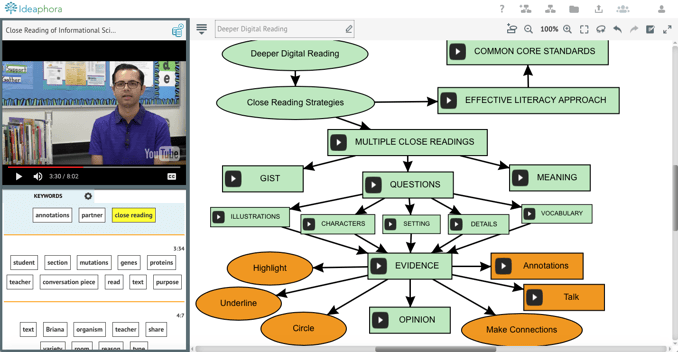Due to their cost-effectiveness and convenience, digital texts are becoming as popular inside classrooms as they are outside school walls. Students will increasingly encounter digital text in their academic, personal and professional lives, so it's imperative they learn how to read proficiently in both print and digital formats.
A growing body of research indicates students read differently online than they do in print. Students tend to consume ebooks and other digital materials, such as online articles and videos, passively, skimming the material rather than deeply engaging with it. Studies have shown students' comprehension suffers when reading online. Research by the Schugars, the Joan Ganz Cooney Center, and others, as detailed by Education Week, indicate that the same attributes of ebooks that increase students' motivation to read also create distractions for students, affecting the way they read.
Recently, Katrina Schwartz of MindShift covered this topic in her article, "Strategies to Help Students 'Go Deep' When Reading Digitally." The article offers tips from educator Devin Hess who advocates having students engage in close reading activities with digital texts and tools to improve their comprehension and vocabulary skills. Many of the research-based strategies typically employed when reading print books, such as underlining, highlighting, annotating, taking notes and bookmarking, can be used in the online environment as well. Hess' approach emphasizes transferring these activities to the digital space to slow kids down to focus on the text, foster discussion, interact with the text in meaningful ways, and reflect on what they've read and learned. He notes digital tools can provide scaffolded support to students while reading online when used constructively. Teachers are guiding students through the deep reading process.
In addition to, and extension of, Hess' approach is concept mapping, proven through years of scientifically based research to help students understand complex concepts and text.  Ideaphora's mission since its inception has been to use concept mapping to deepen students' engagement with digital content while helping them develop higher order thinking skills and lasting knowledge. Pairing Ideaphora's concept mapping tools with digital reading enables students to deeply engage with texts to increase their reading proficiency.
Ideaphora's mission since its inception has been to use concept mapping to deepen students' engagement with digital content while helping them develop higher order thinking skills and lasting knowledge. Pairing Ideaphora's concept mapping tools with digital reading enables students to deeply engage with texts to increase their reading proficiency.
Ideaphora aids students in breaking down text into meaningful, easy-to-understand concepts, then provides easy-to-use tools to organize and connect these ideas in visual maps. Learners arrange concepts in such a way that is personalized to them, creating a deeper connection to and understanding of the text they are reading. The digital text is presented side by side the concept mapping area to cut down on clutter and toggling. Students and educators can access digital texts such as ebooks and PDFs for mapping from Ideaphora's library of vetted open education resources or upload their own. The streamlined environment is purposefully designed for simplicity to enable students to focus on thinking and reading without distractions.
By having students share their reading maps with the class, teachers can spark self-reflection and discussion. Students can continually modify maps over time as they read more on a particular topic. As students create a personalized map of the content they read, they become experts, motivated and empowered to further their reading and learning.
Dr. Mary Chase details several ways to use Ideaphora with deep reading strategies and digital texts in her blog posts:
- Reading is a Verb
- Transactional Theory in Practice: Visible Thinking and Reading
- Patterns and the Visualization of Knowledge
- Using Ideaphora to Support Reading Strategies: Part 1
- Using Ideaphora to Support Reading Strategies: Part 2
To use Ideaphora Classroom to help your student deeply engage in digital reading, sign up for a free trial or our free pilot program.

